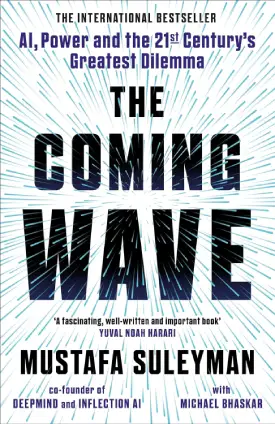Generative AI
What is Generative AI?
Generative AI is the type of artificial intelligence that deals with creation (generation) of various high-quality data types, such as text, images, videos, audios, and other media. The generating process develops through learning the patterns and structure of input training data, often raw data, and subsequently able to generate new unique data. Behind the scenes, the newly created data contains similar characteristics of the training data, but is not identical and is defined as unprecedented.
Generative AI uses deep learning techniques. Deep learning is part of machine learning, based on artificial neural networks (ANNs), trying to simulate learning jus like the human brain. The advancement of deep learning, alongside data availability and computational power, enabled Generative AI to mark a turning point and the breakthroughs in the field.
Advantages and disadvantages
Artificial intelligence is a powerful tool and Generative AI extends the potential possibilities of the field. The advancement of powerful technologies brings many benefits to the AI industry, but also challenges. The following are some of the advantages and disadvantages of generative artificial intelligence.
Benefits
- Resource and time/cost saving through acceleration and automation of processes.
- Improvement in operational efficiency in existing systems.
- Boosting creativity and innovation via complex data analysis and new original data creation.
Challenges
- Possible biased data availability as well as lack of quality data in specific industries.
- Need for expensive and computationally powerful machines and extensive expertise in the field.
- Challenging access to data collection and model development licensing.
Types of Generative AI Models
There are several generative artificial intelligence models. The following are some common choices of powerful models.
Generative Adversarial Networks (GANs)
GANs use two neural networks, a generator and a discriminator. Simply, the generator produces examples from an input data, and the discriminator learns to tell the difference of whether the newly generated data is real or fake. With training time, the generator learns to produce better outputs and simultaneously the discriminator learns to distinguish more effectively.
Diffusion Models
Diffusion models operate through the diffusion of datapoints in the latent space. There are two stages, forward diffusion and reverse diffusion (denoising). The first process operates by adding random noise to the data and the second, as the name suggests, reverses the noise. By denoising the diffusion process, the reverse method, the model is able to produce new output and consequently can generate unique data.
Variational Autoencoders (VAEs)
VAEs are methods for learning latent representation, aiming to determine the encodings of data. Similar to diffusion models, variational autoencoders operates through two neural networks, called encoder and decoder. First, the encoder converts the input training data into smaller depiction of samples. Then, the decoder can use the converted data and reconstruct it back to the original data.
Transformer Models
Transformer models are neural networks, aimed at learning the framework of text and speech (context) by processing sequential input data. These models detect and track contextual relationships of words over long distances by using self-attention, which allows access and weight allocation to all previous states.
Applications of Generative AI
Generative AI applies in vast number of industries and there are abundant use cases currently circulating the field. It is used in finance, marketing, engineering, art, software development, healthcare, gaming, writing, fashion, research and innovation, and many more sciences. The following are some of the most popular applications of generative artificial intelligence.
- Within the language section, applications surround around writing academic and marketing content, translating text from one language to another, development of programming code, analysing documents, generating notes and emails, and many more.
- Visual applications encompass generation of unique images, 3D modelling and manipulation, design of marketing advertisements, generation and modification of video, improving medical MRI and CT scans, image to photo translation, and so on.
- Many applications are also used in the auditory segment, such as text-to-speech generation, speech-to-speech conversion, production of music materials, generation of voice overs, conversion of presentations or notes into audio, and more.
Next: Prompts




